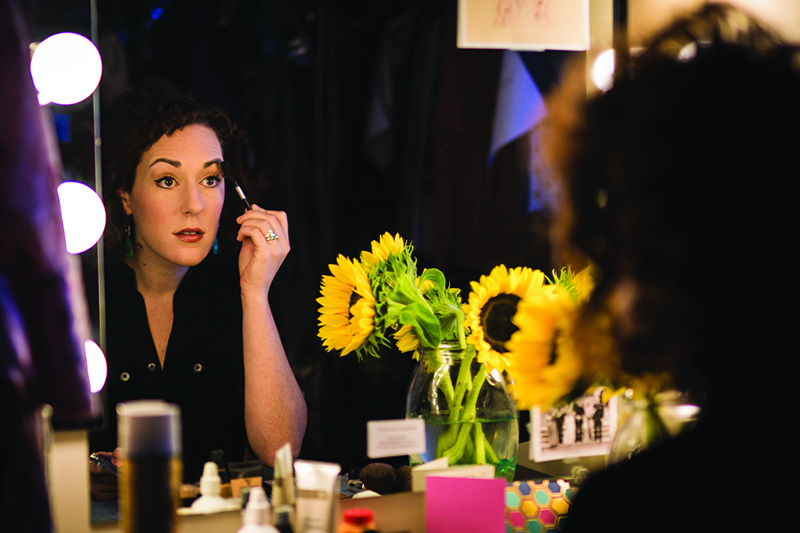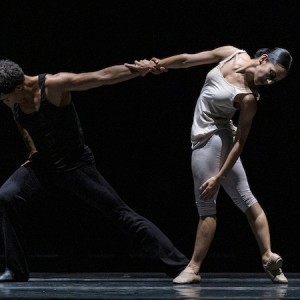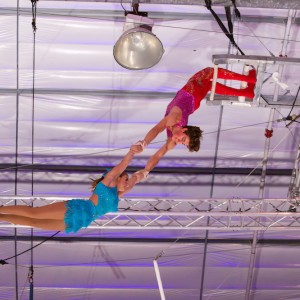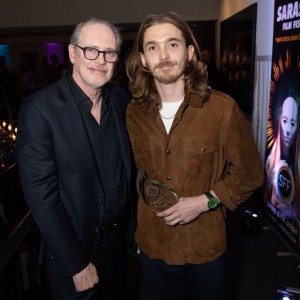Being an actor looks like a lot of fun, but underneath the illusion lies hours of hard work. For a backstage peek, we tagged along with actress Katie Cunningham, a 2012 graduate of the FSU/Asolo Conservatory for Actor Training, during her first technical rehearsal preparing for the role of Marjorie Gray in Asolo Repertory Theatre’s production of Both Your Houses. We’re meeting four weeks into rehearsal: a chaotic process exacerbated by the Asolo’s repertory schedule, placing multiple shows in production at once and straining resources—human and otherwise.
It’s 11 in the morning. Cunningham is composed yet bursting with energy, like the shoulder-length curls she wears pinned close to her scalp and prepped for a wig. She’s had a big breakfast, her morning coffee and some quiet time with NPR’s Morning Edition, but skipped her workout because she’ll need the energy. It’s the first “tech” day, and she fully expects to be working until midnight.
“This is an incredibly interesting time in any rehearsal process because it’s where you start to really see what we’re doing,” says Cunningham. “Now we start cooking with gas.” At this point, the actors know their characters, their lines and the basics of their blocking, but much of what will be the final show is yet to be determined. Music, lighting, costumes and sets all need to be finalized and integrated into the actors’ performances, adding another layer of cues and complications for everyone involved to juggle together as one coordinated performer. “That being said, tech is very strange because it’s not about the actors, but all those elements that make the play the precise and beautifully gilded thing it will become.”
Before diving in, Cunningham sets up her station, her own little piece of theater real estate. Decorated with tokens, treasures and favorite quotes affixed to the mirror, it’s a place she’ll refer to as her “home base,” “refuge” and “sanctuary.” Little pieces like the polished, purple stone heart, a gift from a previous production, remind her of where she’s been; the portrait of her idol, famed Italian actor Elenora Duse, pushes her forward. During her months-long tenure at Asolo, the station provides solitude for focus before a big scene or a place to re-center after a trying one.
Emerging from her station in costume with makeup and wig, Cunningham takes the stage with her cohorts. She’s done her research. She knows her character, her lines and the time period, as does the rest of the cast. They hit their marks, stand stock-still and stay there. The lights dim and flare as the crew searches for the optimal configuration and the actors wait. When they do begin to perform, it’s through a flurry of shifting lights and side-chatter, with plenty of starts and restarts at the request of the stage manager or director. Leaving the stage, a voice calls to Cunningham from the audience. “Before you go offstage, can you do a slow circle?” Cunningham obliges and the owner of the voice inspects her costume and takes notes. This is tech day. In order to bring all of the elements together on tech day, the actors perform onstage in full dress while the rest of the crew experiments and the director tweaks. It’s their first chance to see the cast in action and in their element. The actors could be asked to repeat the same moment, an entrance or scene change, sometimes up to 20 times, while the crew hammers out the details and smooths over any snags.
“The most important thing an actor can do during tech is to be patient and be willing to sit and let them to the work they need to do,” Cunningham says a few hours later. The smallest change can have sweeping effects. Earlier, a small table with a typewriter atop was moved by three inches, a simple maneuver that played out across the blocking of an entire scene. Cunningham uses the typewriter in an early scene, but in later scenes it sits as more of an obstacle to the actors moving about the set. The director determines that the table can be subtly moved after its initial use, and the crew sets to the logistics. “It’s been a really smooth and easy tech so far.”
Midafternoon. Cunningham comes to one of her most challenging moments. Finishing a scene opposite David Breitbart, who plays her father in the show, Cunningham must mount the rotating stage, exit and then conduct an entire costume change in 55 seconds before hitting her cue in the next scene. It’s her first attempt. The rotating stage presents no problem and Cunningham exits on cue. The stage halts and the next scene begins as seconds tick away. The actors perform and project, but all eyes are watching the door at stage left, its stubborn impassiveness and the impending cue. Cunningham emerges, a little harried and a few seconds behind. Her strappy shoes are identified as the culprit, costing her precious seconds. The director, Cunningham and the costume director talk solutions. Costumes are often rigged and hung to facilitate quick changes; the shoes will have to be similarly adjusted. “It’s a lot of pressure on me, but also on the wardrobe crew,” says Cunningham. “They’re back there and it takes a village.”
Five o’clock rolls around and it’s time for a two-hour break. Cunningham goes home for dinner with her partner, a stage manager at Asolo working on a different show. They talk about their days and Cunningham takes a nap. “I try to really honor the breaks,” she says. “It’s really important, especially in this schedule. Going down sick is not an option, you have to rest.” She still comes in early to work on her makeup and try a new look for her character. Another hour passes and the streetlamps blink on, throwing their dim light into the dark, while in the Asolo the spotlight never sets. The sun may have missed it but the technical run is complete far earlier than anticipated and the director calls for a proper run-through of the play, done in real-time with all of the changes and modification made throughout the day. Cunningham is excited. This puts them ahead of schedule.
“Now the challenge becomes to remember everything that we’ve added and changed, while still focusing on the performance,” says Cunningham, who has recorded all the changes in her script, her “master map.” She has to strike a delicate balance: staying in the moment but still planning ahead. “All you can do is play each moment as it plays and try not to get ahead of yourself and worry about the next scene. You can’t let yourself go there.” It’s almost ten hours into the workday and Cunningham seems to be more energized than when she began. She credits the adrenaline. She shows off her new eyebrows, which she sculpted to be more period-appropriate using glue sticks and a pencil. A voice blares over the speakers, calling Cunningham to the stage. The run-through goes smoothly. Cunningham almost hits her quick-change. She’s confident they’ll nail it next time.
Midnight approaches and the cast and crew file out. It’s been more than a 12-hour day, but Cunningham won’t head straight to bed. It’s a late meal at home with her partner, time with the dog and then a little decompression before hopefully being in bed by 1am. Just another day in the theater. “It’s a lot of prep and work to get ready,” admits Cunningham, but for each audience they get but one chance to get it right. “It’s one moment. It’s there and then it’s gone forever.” SRQ

PHOTOGRAPHY BY SHANE DONGLASAN









